In landscape design, a willow hedge is often used to decorate the perimeter of the site. These flexible, fast-growing plants lend themselves to weaving, shaping. An elegant fence can be an aesthetic element of zoning. With proper care, the plants look beautiful, create an openwork shade.

A willow hedge is one of the oldest ways to mark the boundaries of your territory.
The use of willow in landscape design
Content
- The use of willow in landscape design
- Live fence
- Willow tunnel arch
- Willow varieties for live fence
- Willow Purple Nana
- Weeping willow (Babylonian)
- Willow Purple Pendula
- Wolf willow (yellow willow, pomerania)
- Willow Uralskaya Sinuous
- Iwa Hakuro Nishiki
- Tips for the care of willow hedges
- Formation of willow fences - trimming, garter, weaving
- Photos of examples of beautiful willow decorations
- Video: Workshop on weaving willow hedges
- Photo ideas for using willow in the garden
A living wicker willow fence is also formed in the form of tunnels, wickerwork, a row of light columns resembling a carved palm tree, or a sparse hedge made of single bushes.
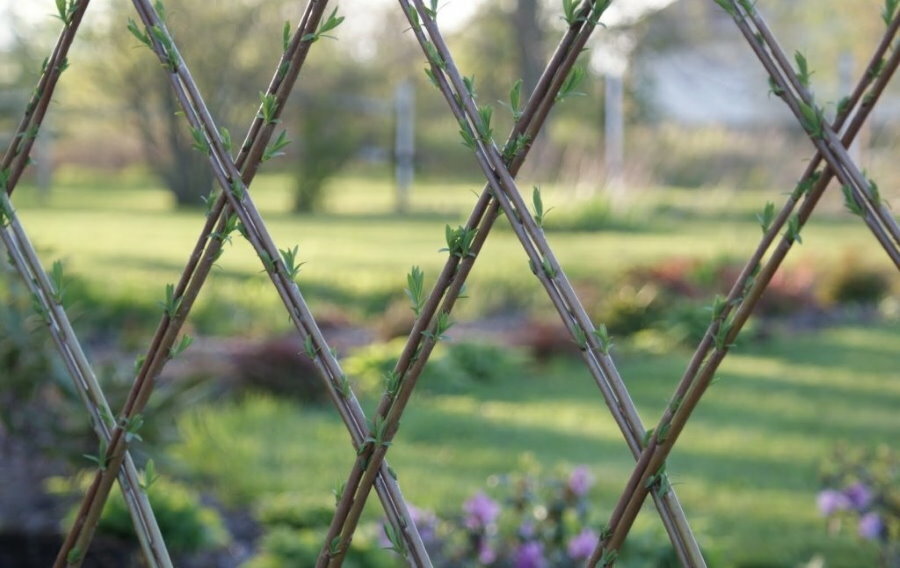
Young willow branches can be intertwined, depicting beautiful patterns and designs
Various manipulations are carried out with flexible willow branches, young shoots can be easily weaved together in any sequence. In a couple of years, when the trunks become woody, it is pleasant to admire the creation of your own hands.

The intertwined willow branches form a fairly strong wall that protects the site from the penetration of people and animals
Unusual solutions in the form of wicker vine hedges always become a bright accent. They look exotic in the landscape of backyards.
To prevent the wicker from overgrowing, young shoots are removed several times per season, preventing lateral shoots from forming. The tops of the hedges are formed with pruning shears.
Live fence
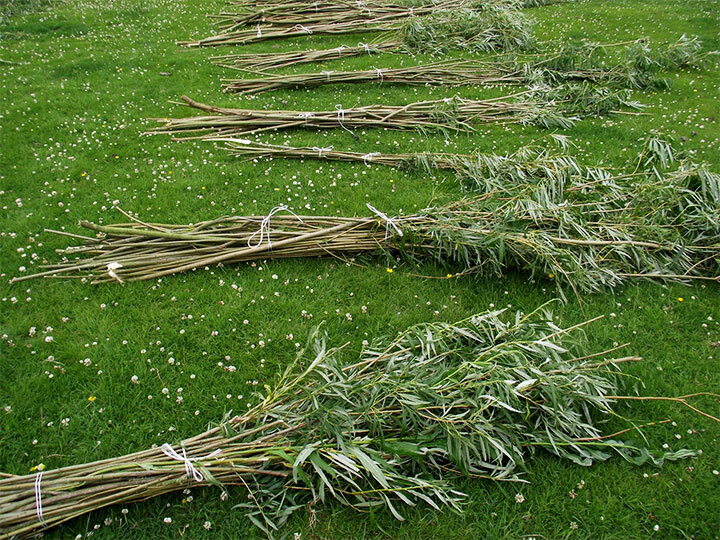
Hedge planting material can be obtained free of charge if a suitable willow variety grows in your area.
Before planting plants, you need to decide on the form of weaving. The fence is formed in various ways:
- In one twig with a certain pitch, willows are planted at a distance of 10–20 cm. The disadvantage of this form is the violation of the pattern after an unsuccessful wintering, when one or more plants die. We will have to plant a new seedling, but it will not soon catch up with its neighbors in thickness.
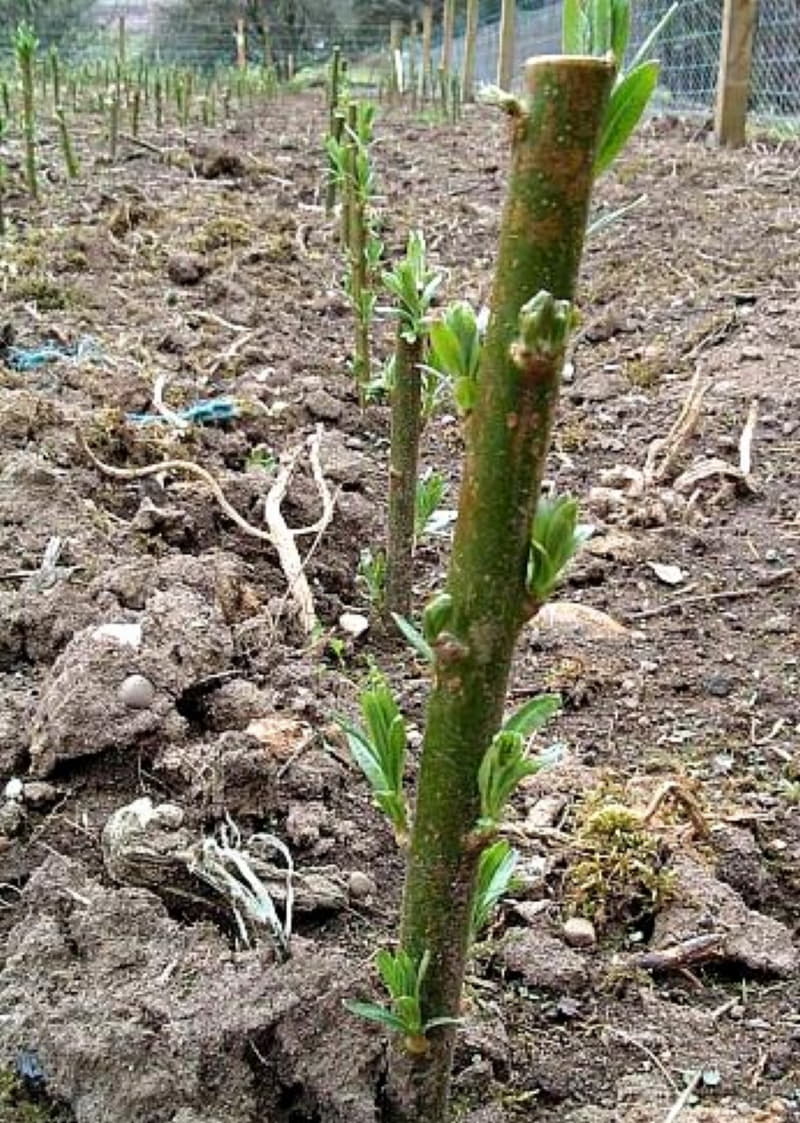
Cuttings are planted in well-moistened soil, leaving at least 2-3 growth buds on the surface
- Weaving in two or three vines is more reliable, excludes defects in the pattern. When planting, 2 or 3 seedlings are placed in one hole at a small distance from each other.
- The cross pattern is similar to the usual weaving in 1 vine, only in addition to diagonally crossing plants, plantings are supplemented with upright willows, forming a twill weave. Straight plants will carry the main load, keeping the living fence upright.
Willow tunnel arch
Arched structures are created from various varieties of willow, with the exception of white tall willow and brittle willow. Beautiful living tunnels are obtained from the holly willow (common willow), black willow, varieties with red and purple leaves.
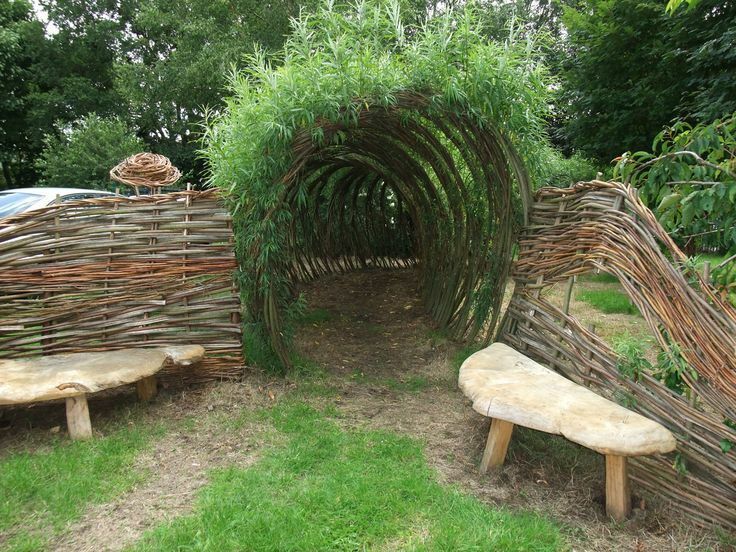
Every gardener can grow such a tunnel.
Small instruction:
- plants are planted in even rows at a distance of 80 to 1.5 m;
- at a height of 2-3 meters, the shoots are connected to each other, tying with a fishing line;
- to speed up the splicing process at the contact points, the bark is cut off, the crossing points are wrapped with polyethylene, then it is removed.
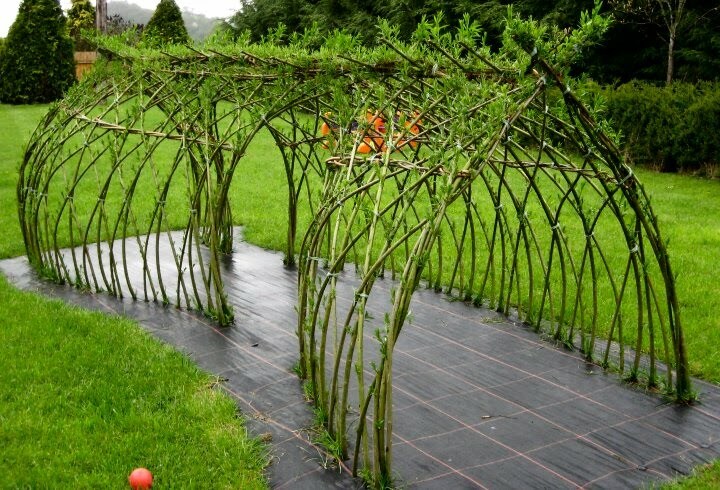
It is better to cover the surface of the earth with a black non-woven material until the rods take root
Such tunnels replace pavilions and are used in the east for the tea ceremony. In formative pruning, the outer and inner parts of the living structure are sheared.
The trunks are allowed to overgrow along the entire height, the tops are directed downward so that there are no voids in the root area.
Willow varieties for live fence
In the world there are more than 500 species of willow, broom, willow, vine, willow, shelyuga - willow has many names. Willow for hedges is selected based on external features and specific features. The stem should be firm and flexible, not breaking during formation. No more than 20 varieties are popular. The most decorative ones require a detailed description.
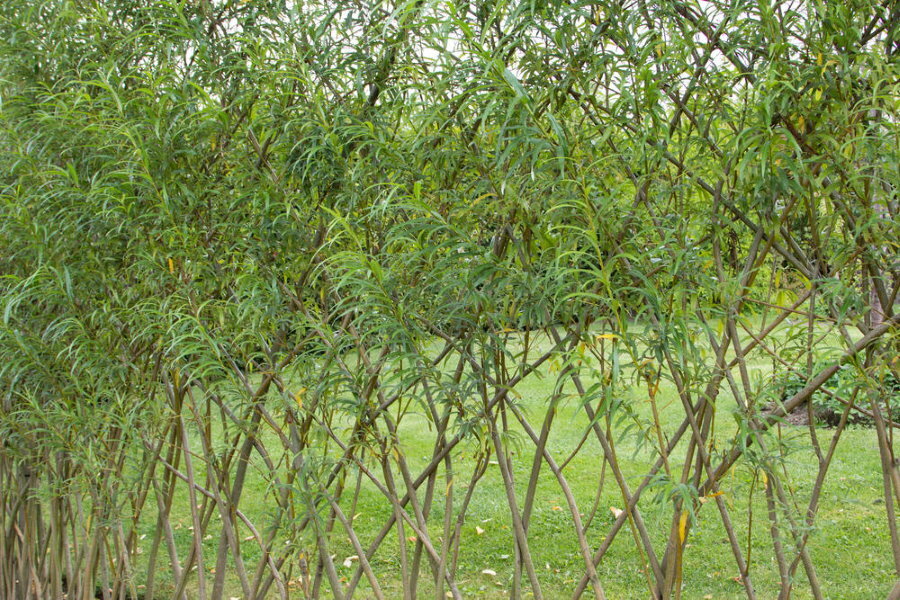
A living willow wall can grow in three years
Willow Purple Nana
It is a shrub variety of 4 meters in height with grayish-blue leaves, purple catkins. The bush blooms in June, it is a honey plant.
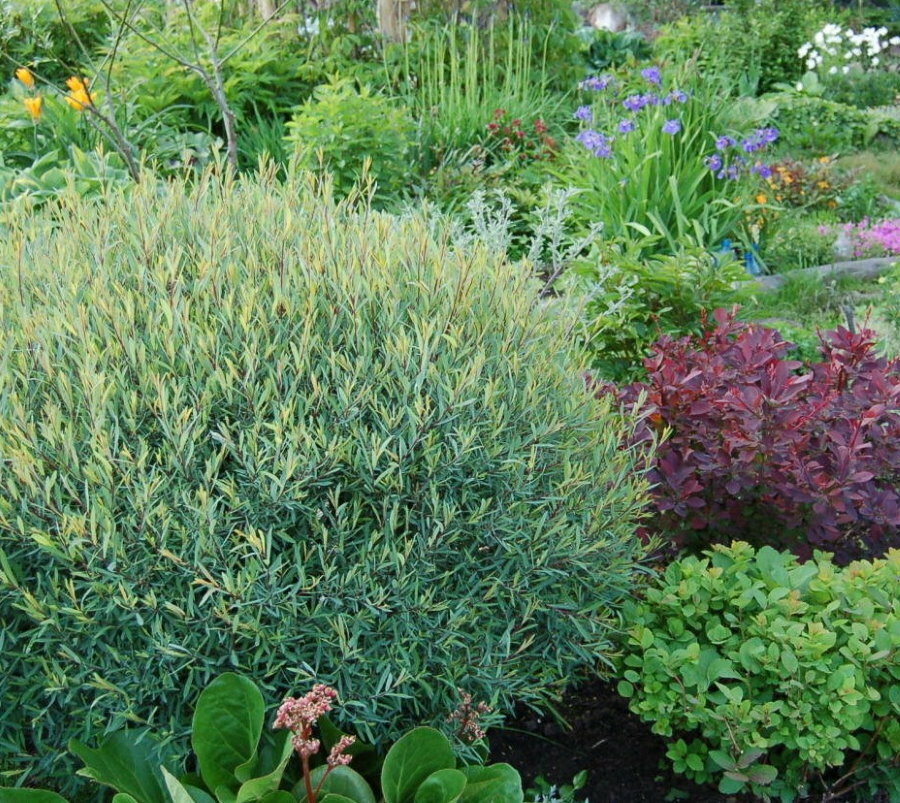
Purple willow is often used in suburban areas as an ornamental shrub
Weeping willow (Babylonian)
Decorative type of tree broom, easily adapting to any conditions, grows up to 12 m, is used for tunnel planting. Earrings are yellowish with a gray tint. The variety is thermophilic, grows well in the Crimea, the Caucasus, the Far East.
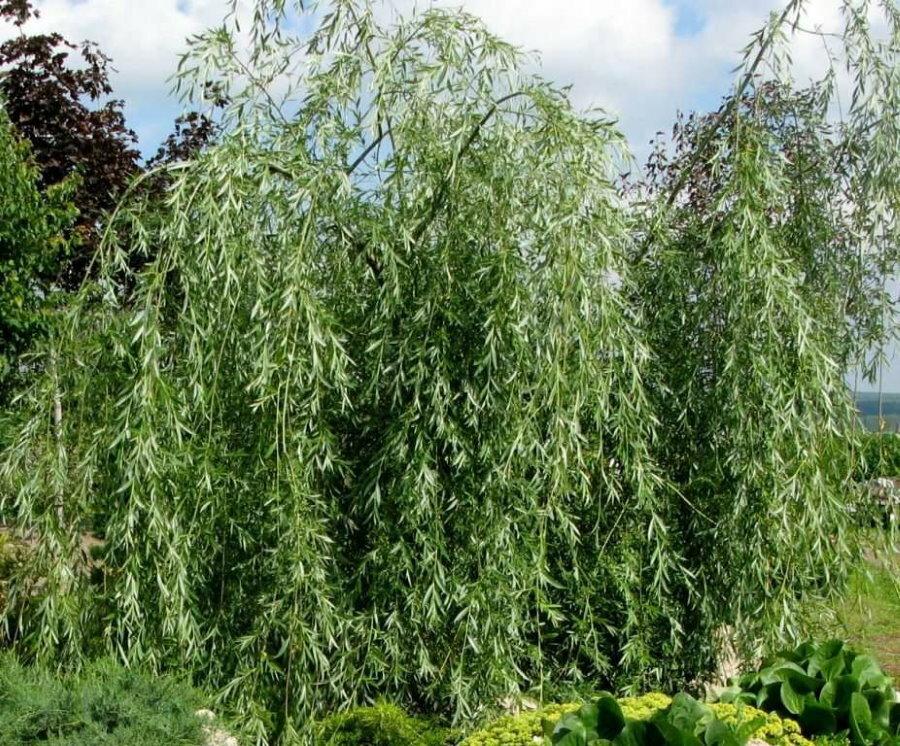
Weeping willow in natural conditions grows mainly near water bodies
Willow Purple Pendula
Low-growing variety, reaches 2 meters in height, unpretentious, fast growing. The bush produces purple catkins in June, grows in any soil, and is frost-resistant.
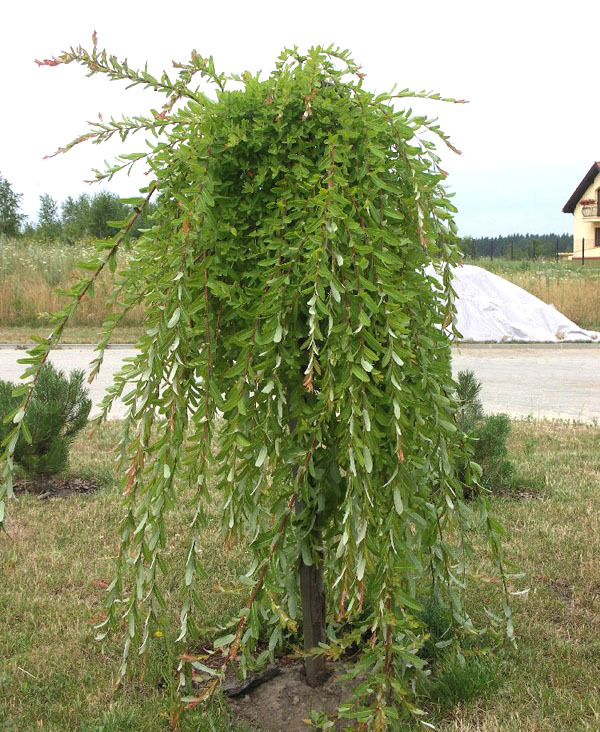
The height of this willow variety depends on the grafting.
Wolf willow (yellow willow, pomerania)
A woody plant species, in Europe it reaches 12 m, in Russia - 6 m. It blooms in April or early May, depending on the climate. Differs in decorative foliage with a bluish tint. For a year, it gives an increase of up to 50 cm.
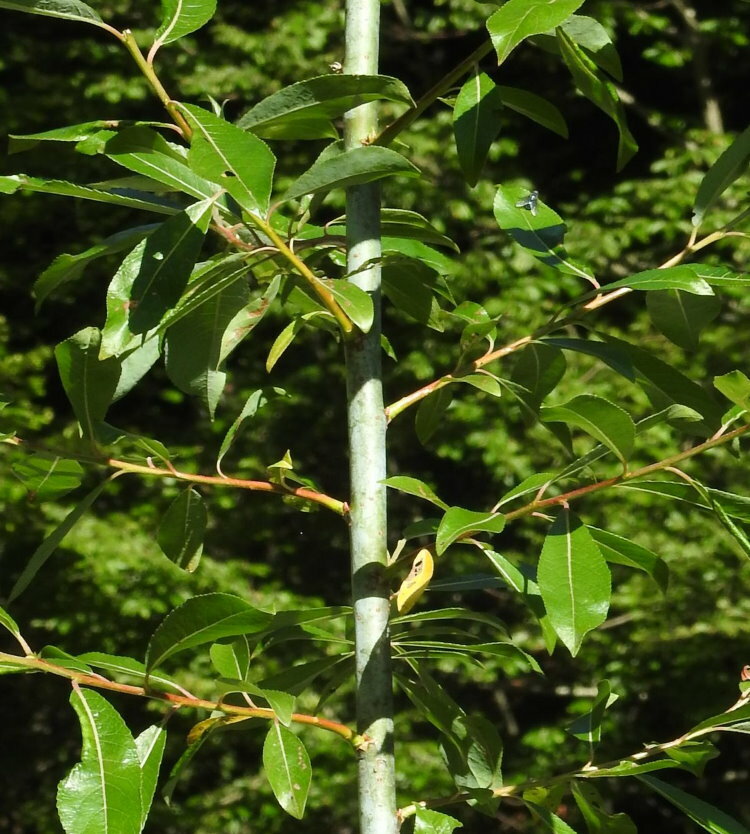
Wolf willow is widespread in the European part of Russia
Willow Uralskaya Sinuous
Woody species up to 3.5 m high, rapidly growing foliage, drought-resistant variety, not prone to scab.
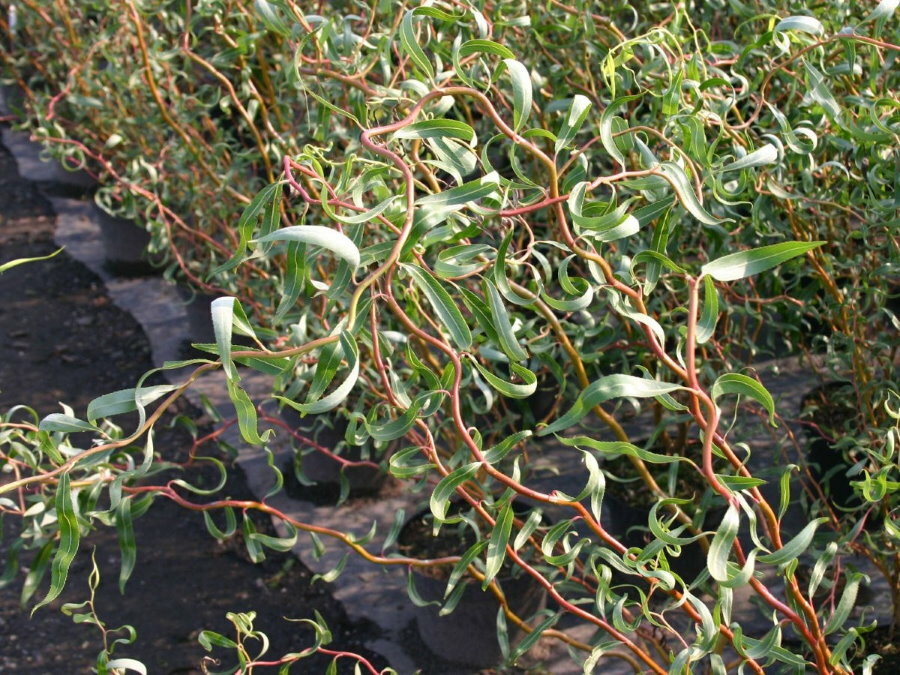
A variety with very winding branches, giving the plant a special decorative effect
Iwa Hakuro Nishiki
The main difference of the variety is the variegated color of the leaves, numerous blotches are chaotically scattered over beige, cream or pale pink leaf plates. The plant is not afraid of frost, grows well in flooded areas.
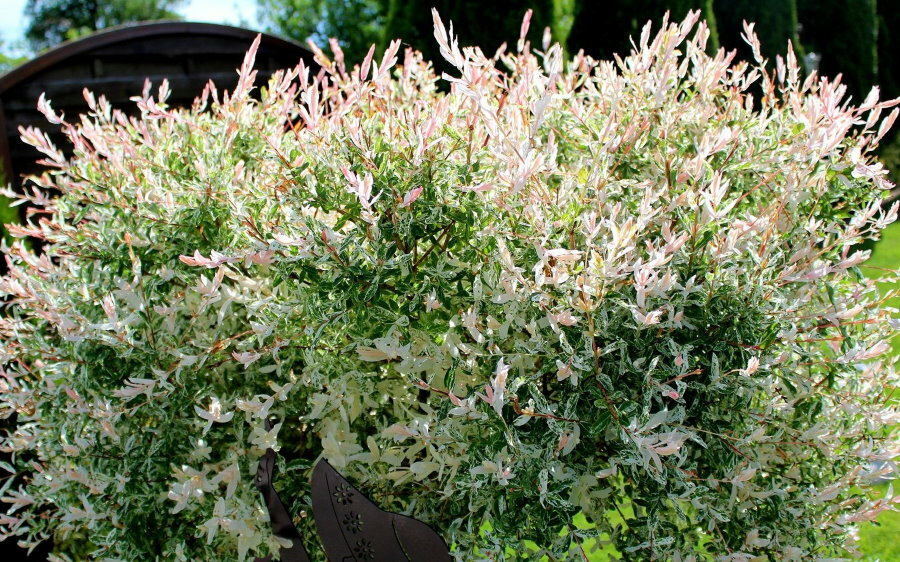
Japanese willow Hakuro Nishiki is completely different from their wild relatives.
Tips for the care of willow hedges
With proper agricultural practices, willow in a hedge gives a good annual growth of 15 to 25 cm, depending on the variety. Constant care consists in regular watering, weeding, loosening.
Willows are moisture-loving, especially young plantings need watering. In dry weather, one-year and two-year hedges are watered up to 2 times a week. Adult plantations with long roots are able to extract moisture from deep layers, so they do not need frequent watering.
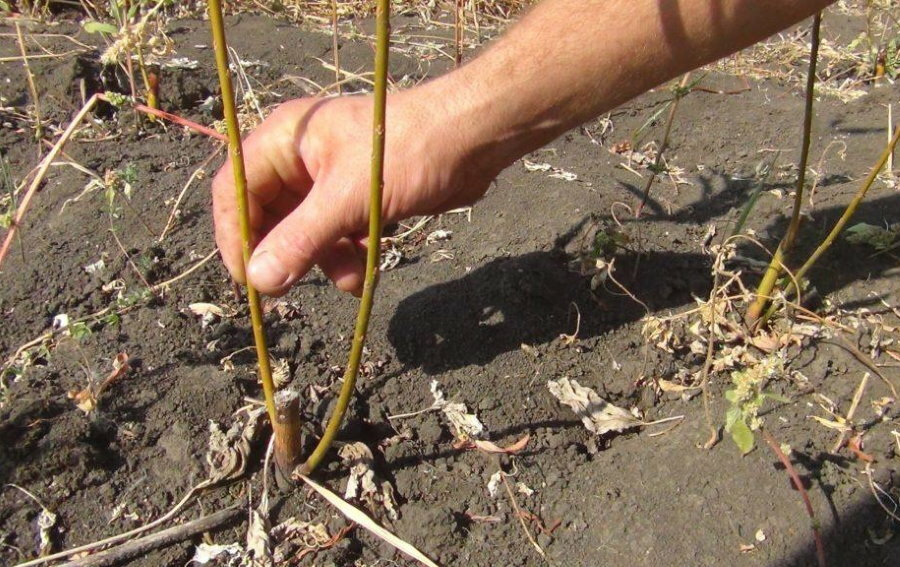
Young willow seedlings especially need care in the first years after planting.
The plantings are loosened and weeded at distances of up to 50 cm on both sides of the hedge. Top dressing is applied no more than once every three years. Fertile loose soil is enriched with minerals only when willow leaves begin to shrink.

Any fertilizer intended for ornamental deciduous plants is suitable for feeding willow.
Spring spraying with fungicides on a green cone is recommended (when the buds open). Fumigation of tobacco crumbs is effective against aphids. Young heat-loving plants for the winter in the early years are sheltered: they build huts from branches and dry grass at the root.
Formation of willow fences - trimming, garter, weaving
Shoot weaving begins in the first year of growth. In autumn, the plantings are examined, weak and damaged plants are replaced with new ones, the first crosses are made, the trunks are fixed with fishing line.
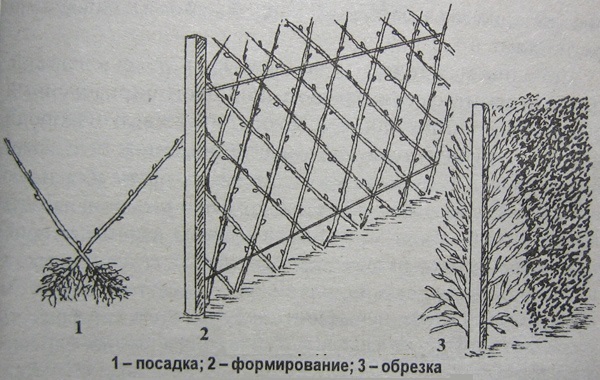
The process of creating a willow hedge consists of 3 stages: planting, shaping and pruning.
Willow hedges are cut at least twice a year:
- In the spring, they carry out sanitary pruning, remove frozen, dried twigs, shoots that go beyond the profile of the fence.
- Plants continue to form in the fall and throughout the summer.
Free-growing hedges are renewed, shortening the shoots by ¾ of the length, mediums are made above the outer bud. In standard forms, root shoots are removed, the stock growing back every spring and autumn.
Photos of examples of beautiful willow decorations
The grace of living willow fences is created by many years of work. Tunnel landings are a special feature of the sites in the southern regions. In a green structure, it is always cool and fresh, it is easy to breathe, because the shrubs emit oxygen.

Willow can be easily shaped to match the style of the suburban area
A wicker fence helps to create unique compositions. You can make a frame of any shape and height. Straight rows of colored willow varieties will decorate the central alley, winding garden paths will turn into fabulous decorations.
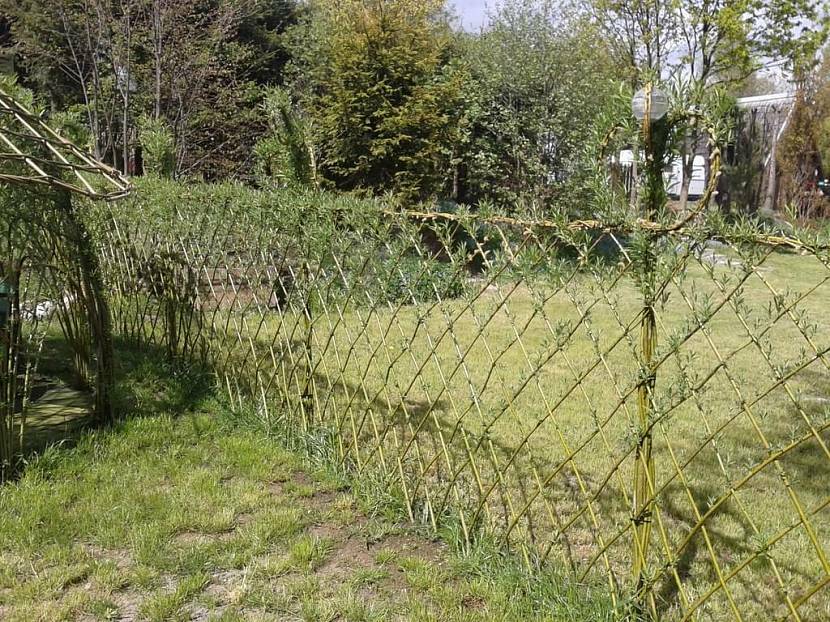
Living willow fence between adjacent plots

Willow living wall along the garden path
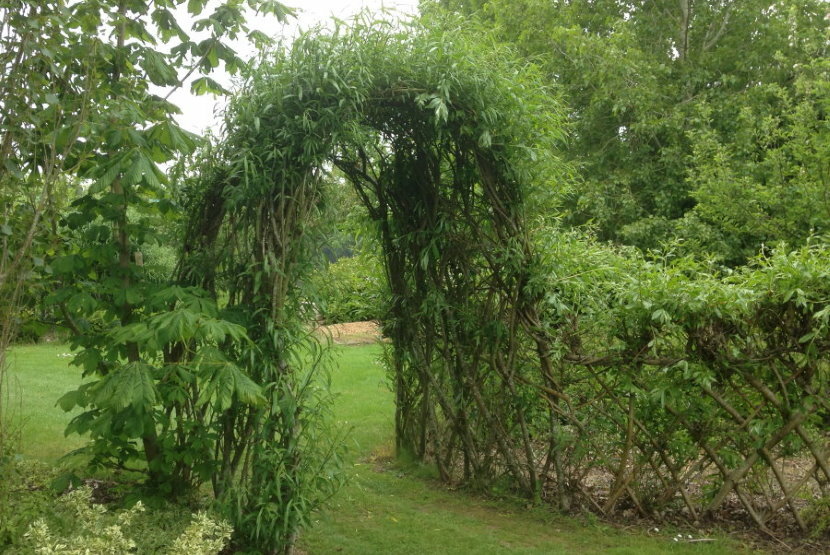
Combination of a hedge with an arch on the path
Arches are considered a popular form of creating a hedge. Banal welded frames made of galvanized or stainless steel rods turn into living tunnels, small arched gazebos.
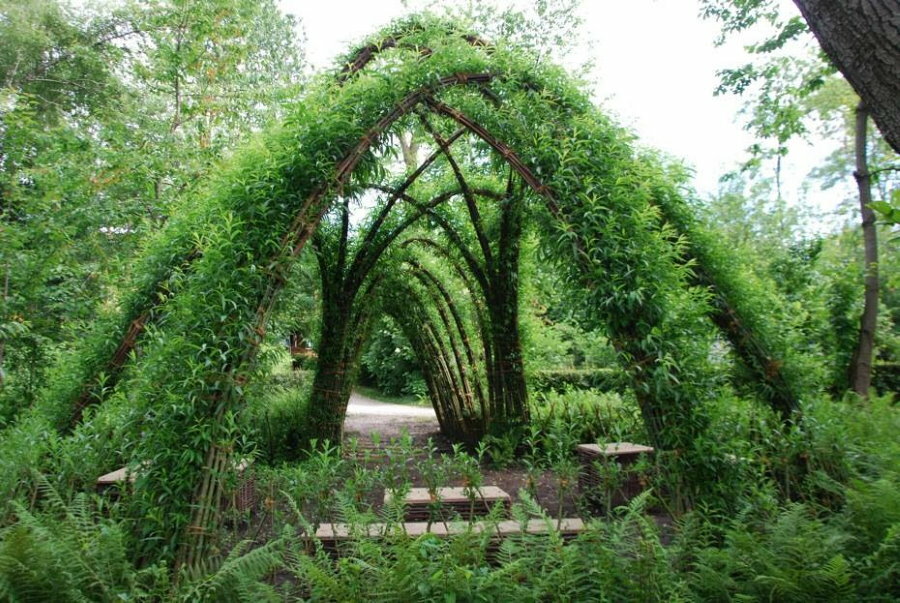
Very unusual and original designs can be created from willow.
The zoning of the garden with oval hedges looks beautiful. Labyrinths and green braids are built from willow. A willow hedge, with all its laconicism and external fragility, becomes a reliable protection from street dust, noise, and prying eyes. Ivnyak is present in many landscape projects of leading designers.
Video: Workshop on weaving willow hedges
Photo ideas for using willow in the garden




